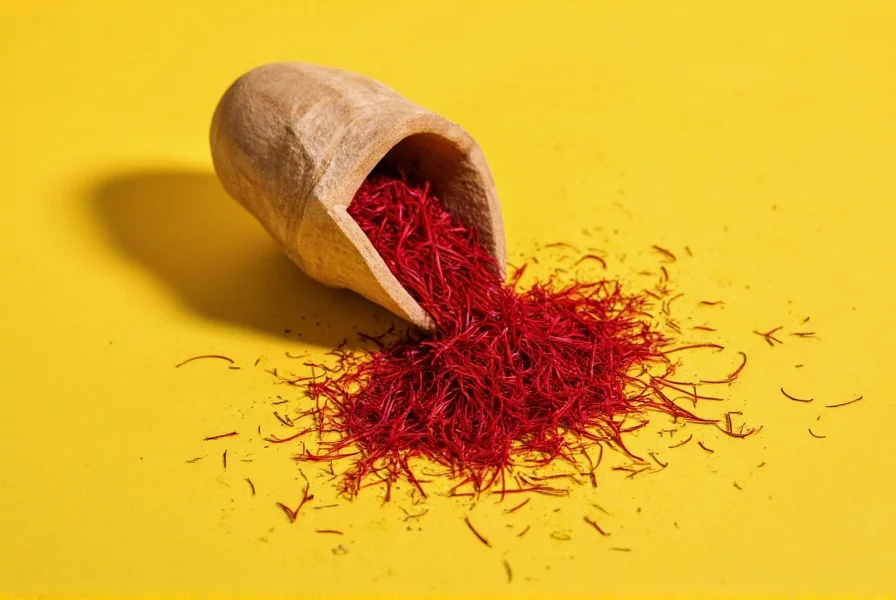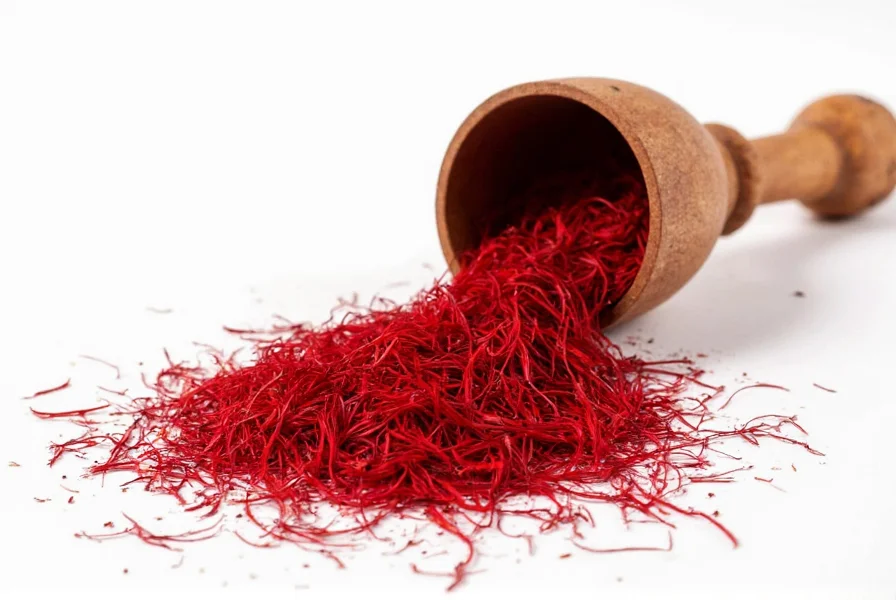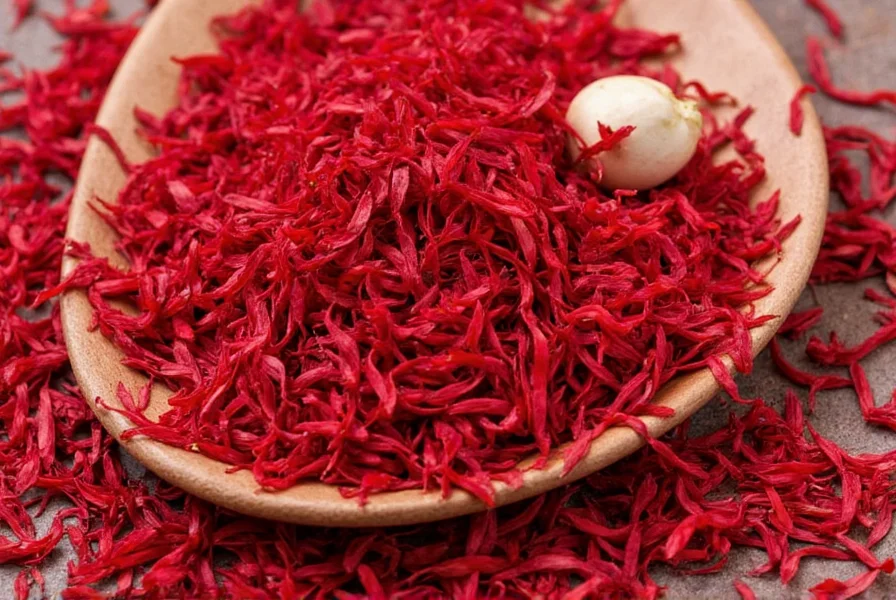Saffron, the world's most expensive spice by weight, has been prized for millennia not just for its distinctive golden hue and unique flavor, but for its potential therapeutic properties. Derived from the delicate stigmas of the Crocus sativus flower, this vibrant red-orange spice contains powerful compounds like crocin, crocetin, and safranal that contribute to both its culinary value and potential health applications.
The Culinary Powerhouse
Chefs worldwide value saffron for its ability to transform ordinary dishes into extraordinary culinary experiences. A few threads can impart:
- Rich golden color to rice dishes like Spanish paella and Indian biryani
- Distinctive floral, honey-like flavor with subtle earthy notes
- Aromatic complexity to sauces, soups, and seafood preparations
- Unique character to baked goods and desserts
Unlike many spices, saffron requires careful handling. Always steep threads in warm liquid before adding to recipes to maximize color release and flavor distribution. One gram typically serves 6-8 people in most dishes, making it economical despite its high price.

Evidence-Based Health Benefits of Saffron
Modern research has begun validating many traditional uses of saffron, though it's important to note that most studies use concentrated extracts rather than culinary amounts.
| Benefit Area | Scientific Evidence | Recommended Form |
|---|---|---|
| Mood Enhancement | Multiple studies show 30mg daily saffron extract comparable to antidepressants for mild-moderate depression | Standardized extract (not culinary spice) |
| Eye Health | Promising research for age-related macular degeneration and retinal protection | Extracts containing crocin |
| PMS Relief | Studies indicate reduced symptoms with 15mg twice daily | Standardized extract |
| Antioxidant Properties | High ORAC value; protects cells from oxidative damage | Culinary use provides some benefits |
Mood and Cognitive Support
One of saffron's most researched applications relates to mental health. Clinical trials have demonstrated that saffron extract (typically 30mg daily) shows comparable effectiveness to conventional antidepressants like fluoxetine for treating mild to moderate depression, with potentially fewer side effects. The mechanism appears related to safranal's influence on serotonin, dopamine, and norepinephrine levels.
For those wondering what is saffron good for regarding cognitive function, preliminary research suggests potential benefits for memory and learning, though larger human studies are needed. The spice's antioxidant properties may help protect brain cells from age-related decline.
Eye Health Applications
When considering is saffron good for eye health, research shows promise. The carotenoid compounds in saffron, particularly crocin, appear to improve blood flow to the retina and may protect photoreceptor cells. Studies indicate potential benefits for:
- Age-related macular degeneration (AMD)
- Retinitis pigmentosa
- Diabetic retinopathy
A 2020 review in Nutrients concluded that saffron supplementation shows "promising results" for retinal function, though more long-term studies are warranted.
Traditional Uses vs. Scientific Evidence
Throughout history, saffron has been used for various purposes. While some traditional applications align with modern research, others lack sufficient evidence:
| Traditional Use | Scientific Support | Current Understanding |
|---|---|---|
| Aphrodisiac | Moderate (small studies) | Potential benefit for sexual function, particularly with antidepressant-induced dysfunction |
| Pain relief | Limited | Some anti-inflammatory properties observed, but not comparable to conventional pain relief |
| Digestive aid | Anecdotal | No strong evidence, though culinary use may stimulate appetite |
| Cancer prevention | Preliminary (lab studies) | Promising in vitro results, but no human evidence for prevention or treatment |
How to Use Saffron Effectively
Understanding how to use saffron in cooking properly maximizes both flavor and potential benefits:
- Activation: Always soak threads in warm water, broth, or milk for 15-30 minutes before use
- Measurement: Use a pinch (about 20 threads) per 4-6 servings for most dishes
- Timing: Add early in cooking for color, later for more pronounced flavor
- Storage: Keep in airtight container away from light; loses potency over time
For those exploring saffron for depression treatment, consult a healthcare provider first. Therapeutic doses typically require standardized extracts (15-30mg twice daily), not culinary amounts.
Safety and Considerations
Saffron is generally safe when used in culinary amounts. However, high doses (above 5g daily) can cause adverse effects including:
- Nausea and dizziness
- Dry mouth
- Anxiety
- In extreme cases, toxicity
Pregnant women should avoid medicinal doses as saffron may stimulate uterine contractions. Those taking antidepressants should consult their doctor before using saffron supplements due to potential interactions.
When purchasing saffron, look for deep red threads with minimal yellow style (the less valuable part). High-quality saffron should have a strong aroma and release rich color quickly when soaked.

Conclusion
So what is saffron good for? Primarily, it serves as an exceptional culinary ingredient that elevates dishes with its unique color, flavor, and aroma. Scientific research increasingly supports specific health applications, particularly for mood support and eye health, though therapeutic benefits typically require concentrated extracts rather than culinary use. As with any natural remedy, approach saffron's health claims with informed skepticism while appreciating its centuries-long role in global cuisine and traditional medicine.
Frequently Asked Questions
What are the main health benefits of saffron?
Research indicates saffron may help with mood enhancement (particularly for mild depression), eye health support, PMS symptom relief, and provides strong antioxidant properties. Most significant benefits require standardized extracts rather than culinary amounts.
How much saffron should I consume daily for health benefits?
For culinary use, a pinch (15-20 threads) per serving is typical. For therapeutic benefits like mood support, studies use 15-30mg of standardized saffron extract twice daily. Never exceed 1.5g daily without medical supervision, as higher doses can be toxic.
Can saffron really help with depression?
Multiple clinical studies show saffron extract (30mg daily) demonstrates comparable effectiveness to conventional antidepressants like fluoxetine for mild to moderate depression, with potentially fewer side effects. However, it should not replace prescribed treatment without consulting a healthcare provider.
Is saffron safe to use during pregnancy?
Culinary amounts of saffron are generally considered safe during pregnancy. However, medicinal doses should be avoided as saffron may stimulate uterine contractions. Pregnant women should consult their healthcare provider before using saffron supplements.
How can I tell if saffron is high quality?
High-quality saffron consists primarily of deep red threads with minimal yellow style (the base). It should have a strong, distinctive aroma and release rich golden color quickly when soaked in warm liquid. Avoid saffron that appears mostly orange or yellow, as this indicates lower quality with less active compounds.











 浙公网安备
33010002000092号
浙公网安备
33010002000092号 浙B2-20120091-4
浙B2-20120091-4